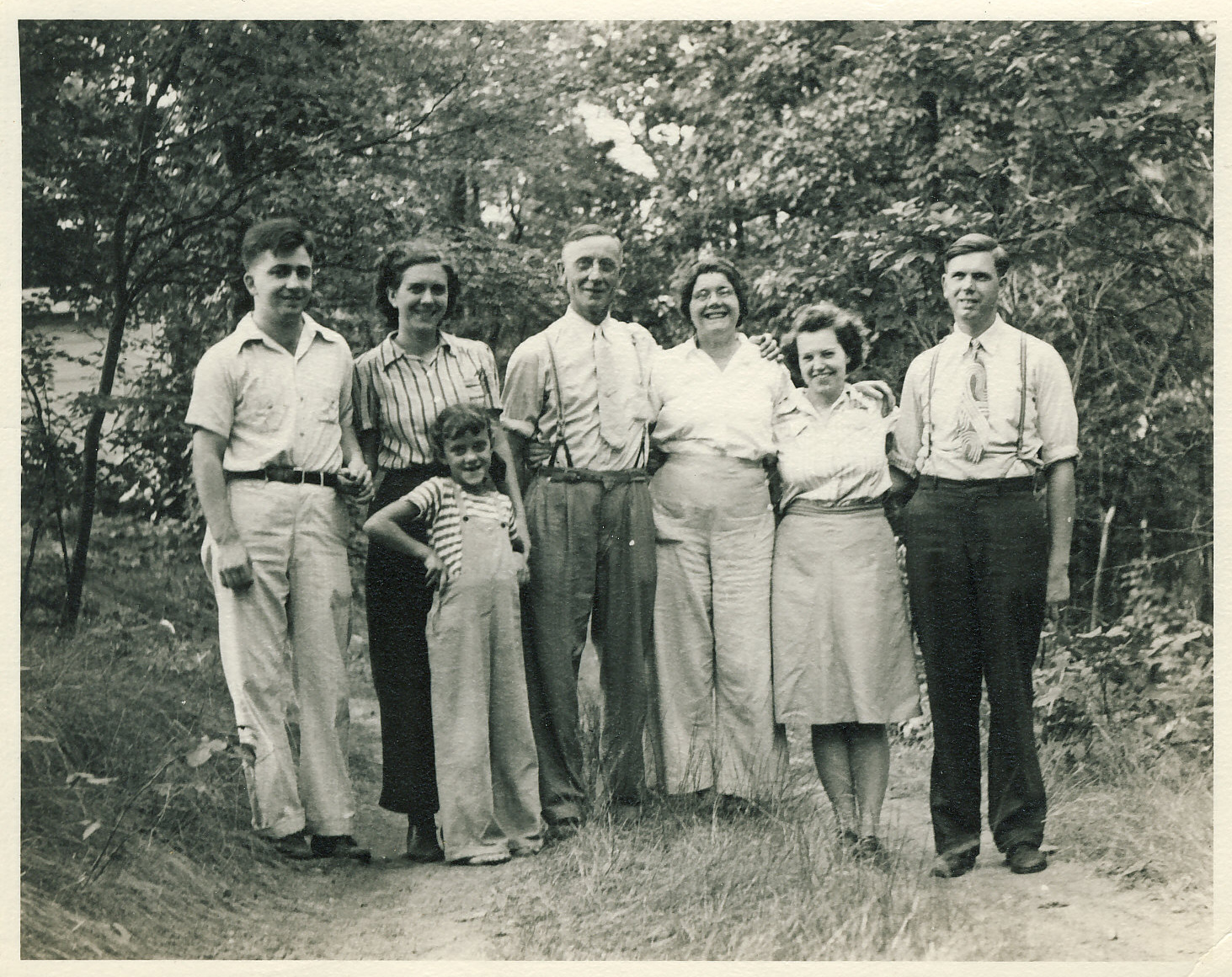The Education of Bessie Estall
• The Sandon Act of 1876 imposed a legal duty on parents to ensure that their children were educated
• The Elementary Education Act of 1880 required school boards to enforce compulsory attendance of children from 5 to 10 years of age
• The 1891 Elementary Education Act provided for the state payment of school fees
— Wikipedia: History of education in England
Bessie and her siblings were the first generation of British children to benefit from the Victorian Era’s enlightened move toward compulsory and free public education.
We can trace the Estall children’s schooling through the Infants Admission Registers of the Bethnal Green schools where her father William dutifully enrolled them.1

From the image above we see that William Estall registered Thomas and Betty (we find her variously listed in records as Bessie, Betsy, Betty, and Elizabeth) in the infant section of the then-named Globe Terrace School on July 1st of 1895. Thomas was five years old, Bessie was four. The family was living in Quinn’s Buildings a short walk away. The children would remain at the elementary school until the family entered the Bethnal Green Workhouse in February 1900, meaning Bessie would have been at the school until she was almost 9 years old.
The school, built in 1874 and enlarged in 1885 to hold 1500 children,2 is still in operation. My sister Beth and I visited it on the off chance they’d let us in the gate. As it turned out, we got the grand tour.
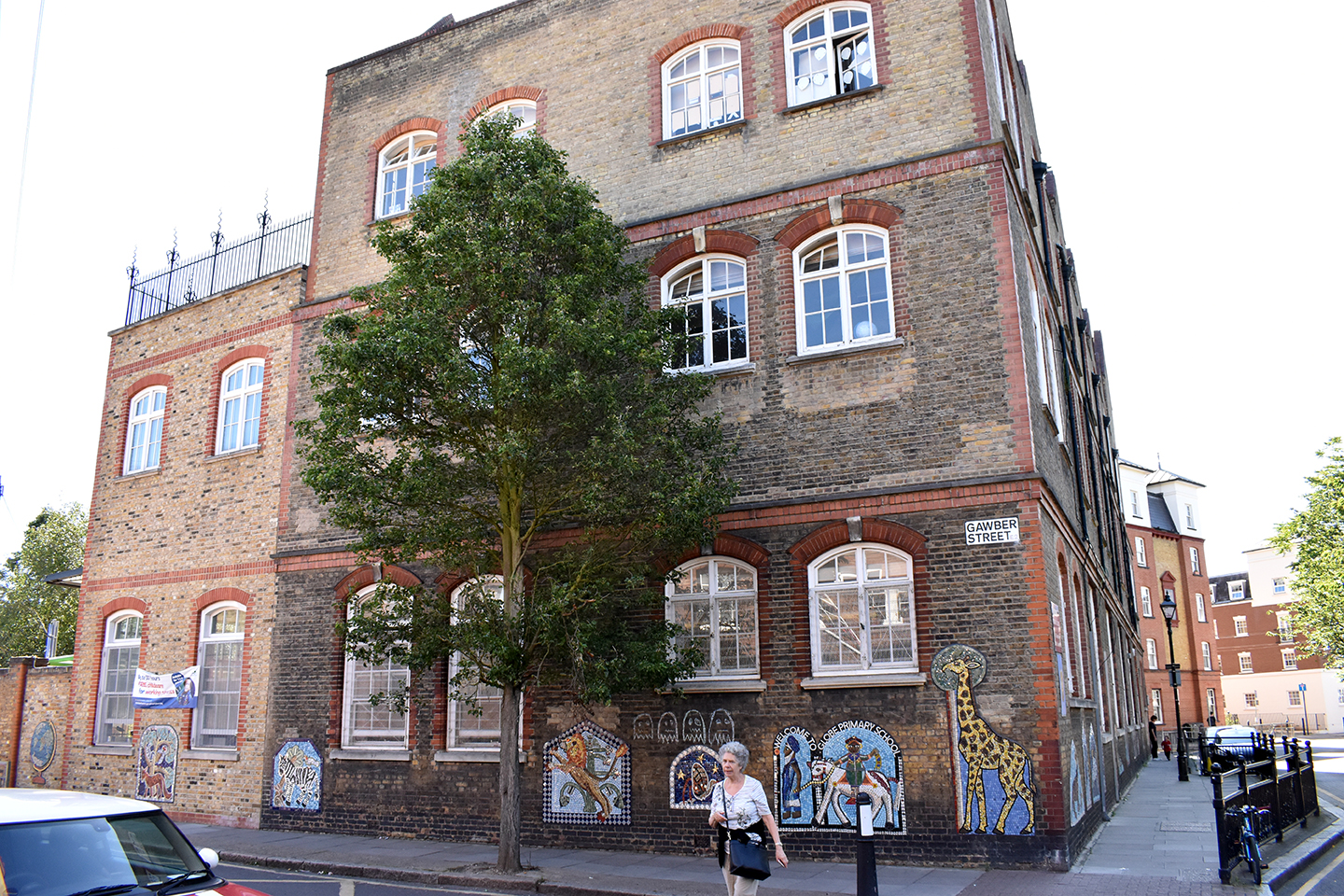
Our host was Gill (pronounced like “Jill”) Ruskin, the school’s family and safeguarding support officer. She’s passionate about genealogy, acts as the school’s unofficial historian, and was herself a student there when growing up. We couldn’t have stumbled upon a more enthusiastic and knowledgeable guide.
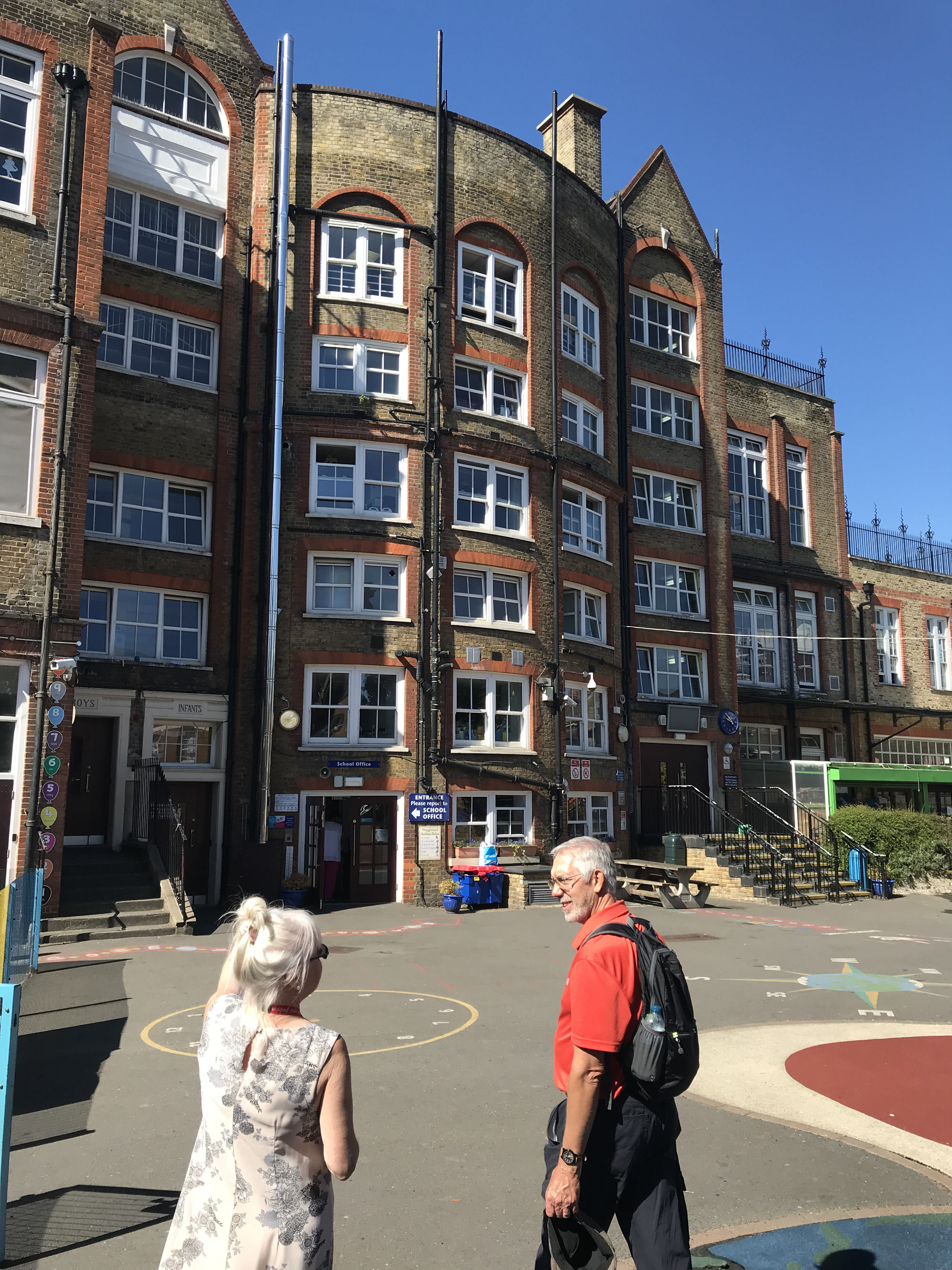
Gill pointed out the original building (the central portion with the curved facade) and how it expanded with the growing population in Bethnal Green. She also pointed out the entrance doors for the boys, infants, and girls as the sexes were segregated in Bessie’s day.
Gill showed us the classrooms, gym and lunchroom (no talking allowed in Bessie’s day), then showed us the playground on the school’s roof. As we came down from there using the former girls stairway I could feel my skin tingle knowing we were on the same stairs that Bessie and her sisters trod well over 100 years ago.
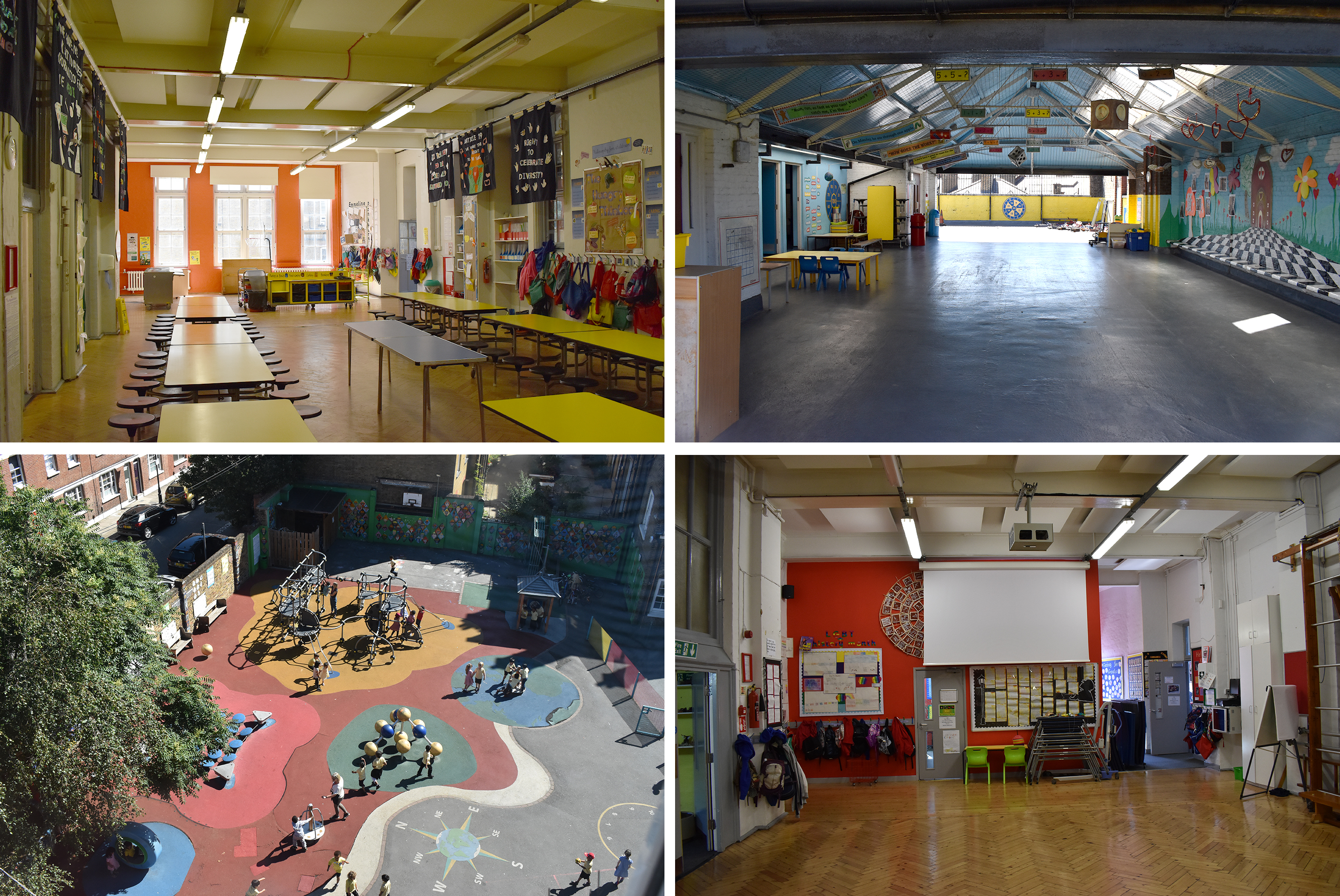
In Bessie’s time the school served the largely impoverished families of the infamously downtrodden East End. Gill explained that the more recent school 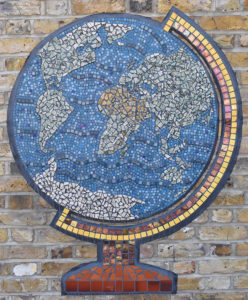 population was primarily from immigrant Somali and Bangladeshi families, so the school still served the under-privileged members of society … at least until the last couple of years. The area is undergoing gentrification and the school is now one of the most sought after in the borough. We could see why: the staff is passionate, compassionate, professional, and sensitive to the needs of children coming from different backgrounds and social levels. Gill pointed out that the children are protected by Geneva Convention guidelines, which are posted in the school. In a sense, the Globe Primary School is aptly named for the 21st century multi-cultural London.
population was primarily from immigrant Somali and Bangladeshi families, so the school still served the under-privileged members of society … at least until the last couple of years. The area is undergoing gentrification and the school is now one of the most sought after in the borough. We could see why: the staff is passionate, compassionate, professional, and sensitive to the needs of children coming from different backgrounds and social levels. Gill pointed out that the children are protected by Geneva Convention guidelines, which are posted in the school. In a sense, the Globe Primary School is aptly named for the 21st century multi-cultural London.
After the Estall family entered the Workhouse in 1900 and her father abandoned the children the next year, Bessie and her sisters were educated in a Workhouse school in the southern reaches of London on the other side of the River Thames. We didn’t have time to visit that area but the school building in Anerley no longer stands anyway.
What we did get to experience was the school in Bethnal Green that gave Bessie and her siblings their basic education when the family was still intact. We got to walk the halls, stand in the rooms, and traverse the stairs where our young ancestors grew up. It was thrilling to feel the connection. And it was quite a, well um … an education.
Notes:
1. William first enrolled Alfred in the Essex Street School in June 1890; then Harriett at Globe Terrace in April 1891; Thomas (previously enrolled at Cranbrook School) and Bessie at Globe Terrace in July 1895; Susan “Lily” at Globe Terrace in June 1896; and Rosie at Globe Terrace in January 1898.
2. British History Online, “Bethnal Green: Education,” https://www.british-history.ac.uk/vch/middx/vol11/pp242-260
